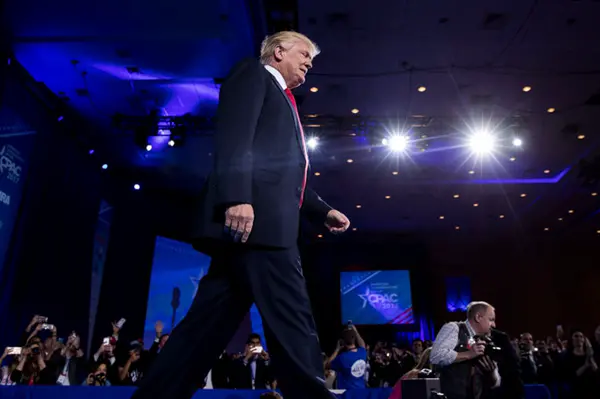The phrase was too toxic even for Nikita Khrushchev, a war-hardened veteran communist not known for squeamishness. As leader of the Soviet Union, he demanded an end to the use of the term “enemy of the people” because “it eliminated the possibility of any kind of ideological fight.”
“The formula ‘enemy of the people,’” Mr. Khrushchev told the Soviet Communist Party in a 1956 speech denouncing Stalin’s cult of personality, “was specifically introduced for the purpose of physically annihilating such individuals” who disagreed with the supreme leader.
It is difficult to know if President Trump is aware of the historic resonance of the term, a label generally associated with despotic communist governments rather than democracies. But his decision to unleash the terminology has left some historians scratching their heads. Why would the elected leader of a democratic nation embrace a label that, after the death of Stalin, even the Soviet Union found to be too freighted with sinister connotations?
Nina Khrushcheva, the great-granddaughter of Mr. Khrushchev and a professor of international affairs at the New School in New York, said the phrase was “shocking to hear in a non-Soviet, moreover non-Stalinist setting.” Her great-grandfather, she said, “of course also used Soviet slogans and ideological idioms but still tried to stay away from sweeping denunciations of whole segments of the Soviet population.”
In Mr. Trump’s case, however, he is branding as enemies a segment of the American population — specifically representatives of what he calls the “fake news” media, including The New York Times.
He has used the phrase more than once, including Friday during an attack on the news media at a conservative gathering in which he said that some reporters were making up unnamed sources to attack him.
“A few days ago, I called the fake news the enemy of the people because they have no sources — they just make it up,” the president said, adding that the label applied only to “dishonest” reporters and editors. Hours later, Sean Spicer, the White House press secretary, barred journalists from several news organizations, including The Times, from attending a briefing in his office.
By using the phrase and placing himself in such infamous company, at least in his choice of vocabulary to attack his critics, Mr. Trump has demonstrated, Ms. Khrushcheva said, that the language of “autocracy, of state nationalism is always the same regardless of the country, and no nation is exempt.” She added that, in all likelihood, Mr. Trump had not read Lenin, Stalin or Mao Zedong, but the “formulas of insult, humiliation, domination, branding, enemy-forming and name calling are always the same.”
The White House did not respond to a request for comment.
The phrase “enemy of the people” first entered the political lexicon in 1789, with the French Revolution. The revolutionaries initially used it as a slogan that was hurled willy-nilly at anybody who opposed them. But, as resistance to the revolution mounted, the term acquired a far more lethal and legalistic meaning with the adoption of a 1794 law that set up a revolutionary tribunal “to punish enemies of the people” and codified political crimes punishable by death. These included “spreading false news to divide or trouble the people.”
The concept resurfaced in a more benign form nearly a century later in “An Enemy of the People,” an 1882 play by the Norwegian writer Henrik Ibsen about an idealistic whistle-blower in a small town at odds with the authorities and locals who, to protect the economy, want to suppress information about water contamination. The Bolshevik Revolution of 1917 returned the term to the blood-drenched dramas of the French Revolution, with Lenin declaring in Pravda that the Jacobin terror against “enemies of the people” was “instructive” and needed to be revived, so as to rid the Russian people of “landowners and capitalists as a class.”
Stalin, who took over as Soviet leader upon Lenin’s death in 1924, drastically expanded the scope of those branded as “enemies of the people,” targeting not only capitalists but also dedicated communists who had worked alongside Lenin for years, but whom Stalin viewed as rivals.
“In essence, it was a label that meant death. It meant you were subhuman and entirely expendable,” said Mitchell A. Orenstein, professor of Russian and East European Studies at the University of Pennsylvania. “This is the connotation for anyone who lived in the Soviet Union or knows anything about the Soviet Union, which Donald Trump obviously doesn’t — or he doesn’t care.”
(THE NEW YORK TIMES)
 简体中文
简体中文





